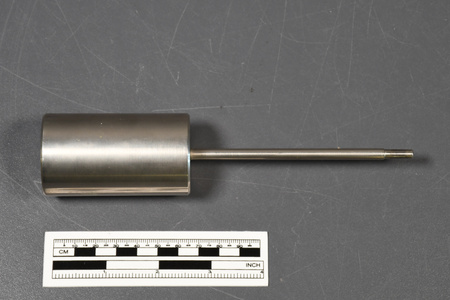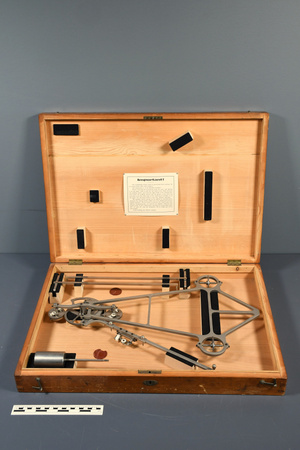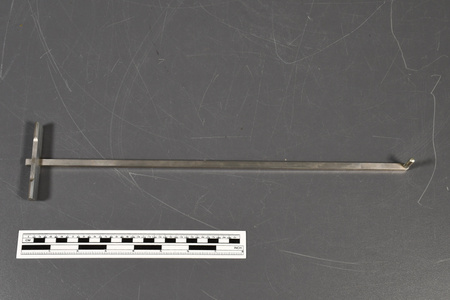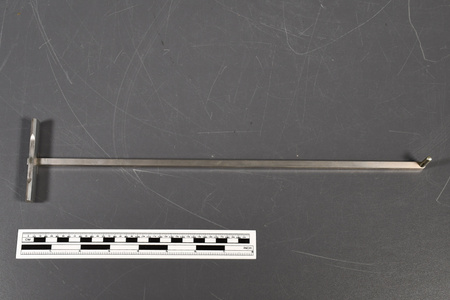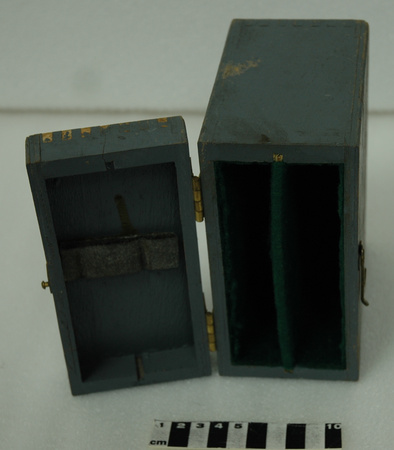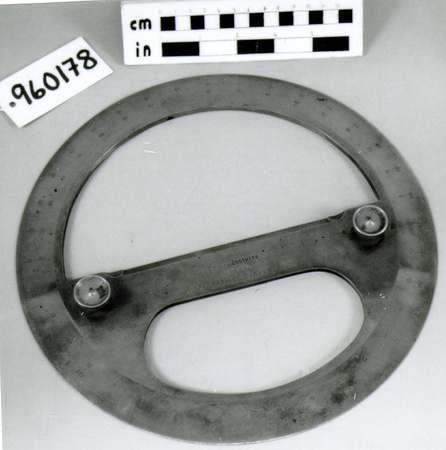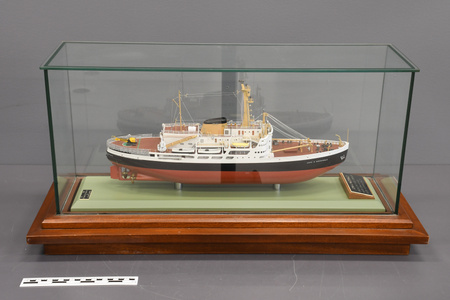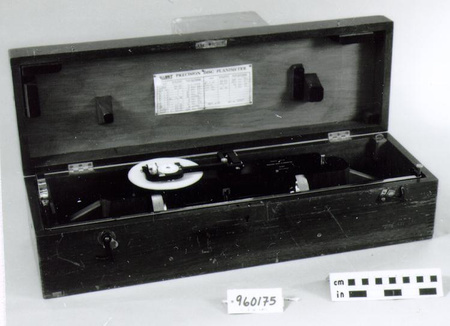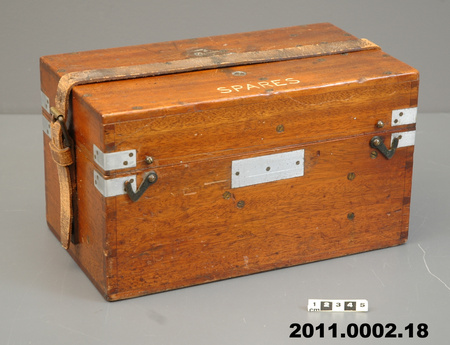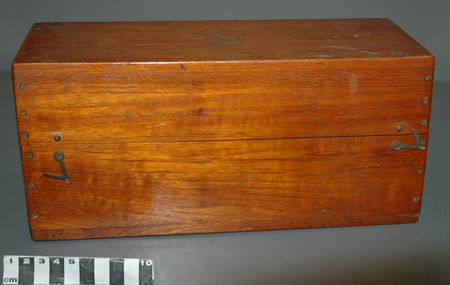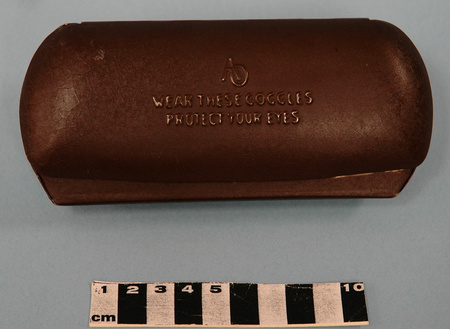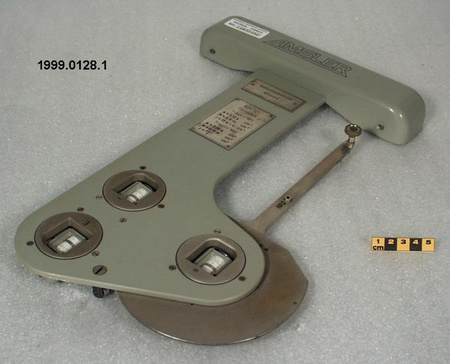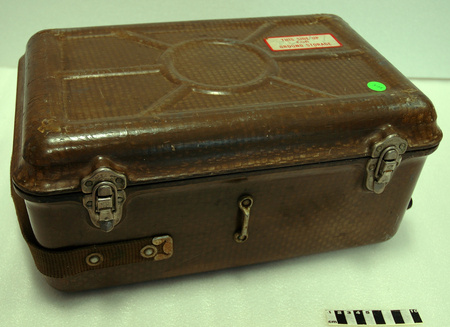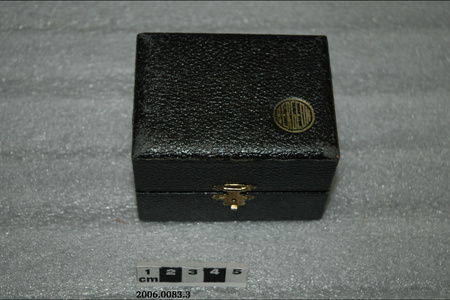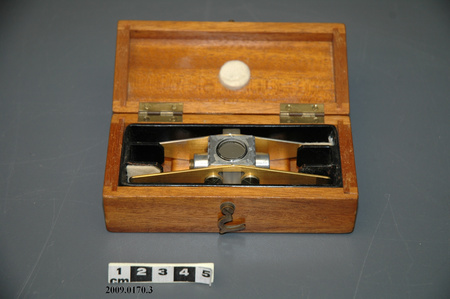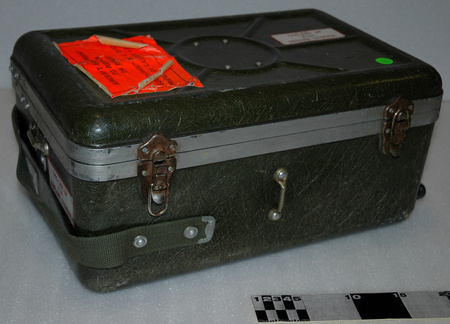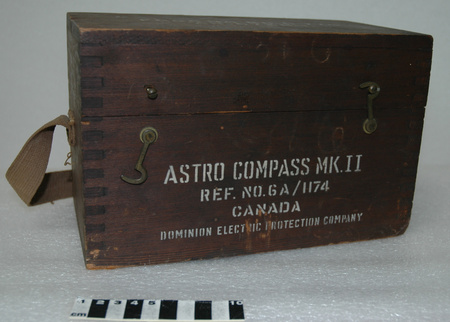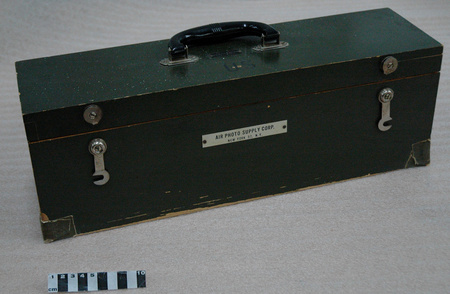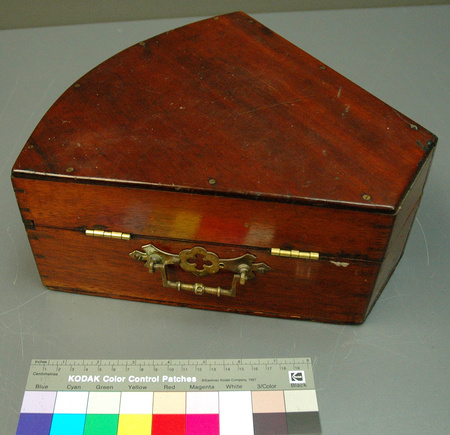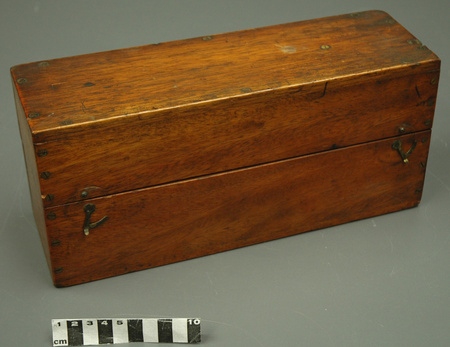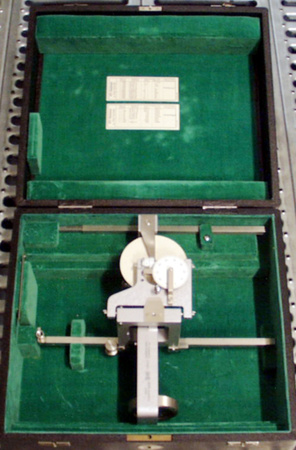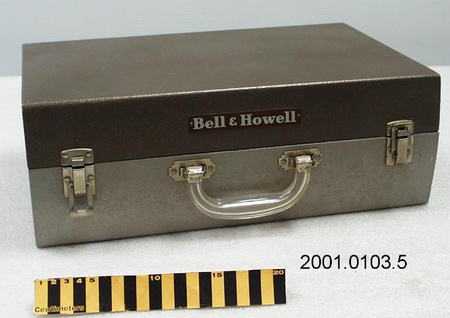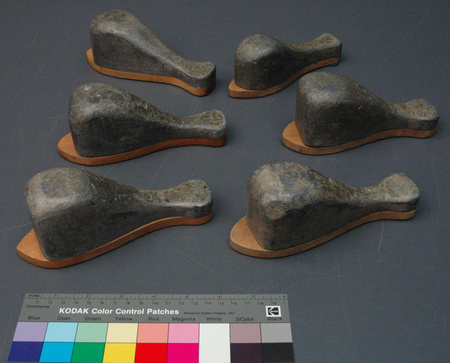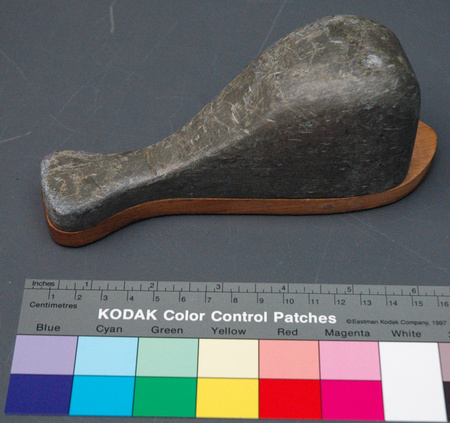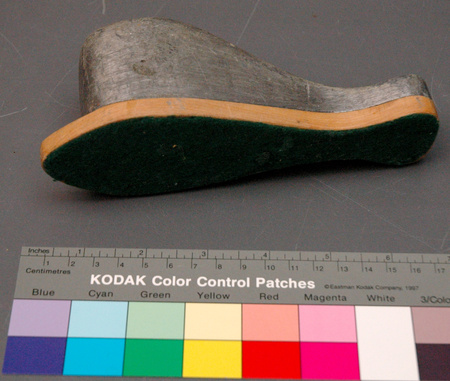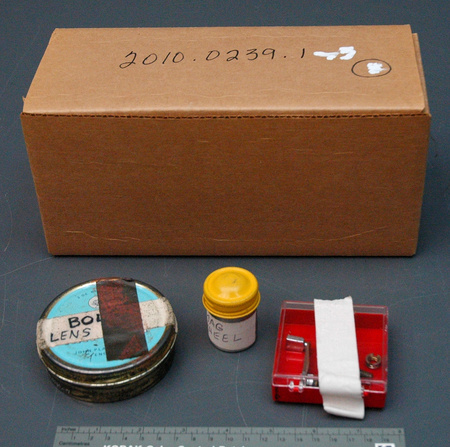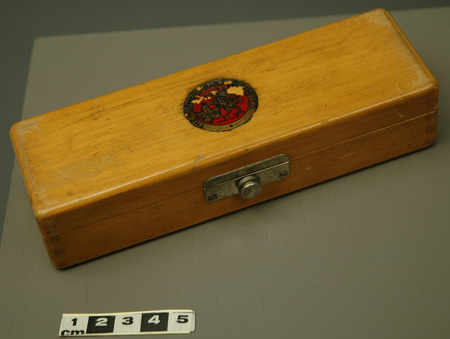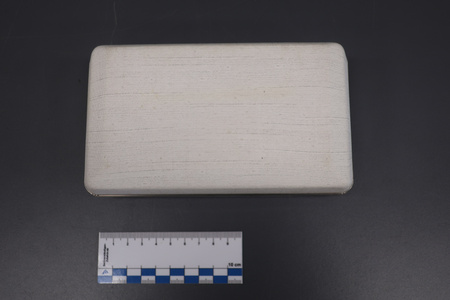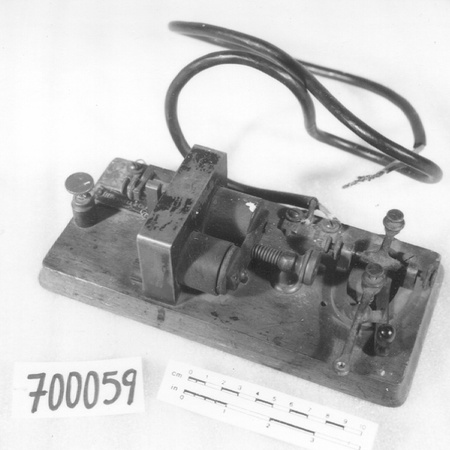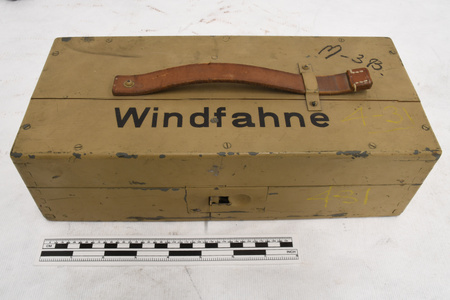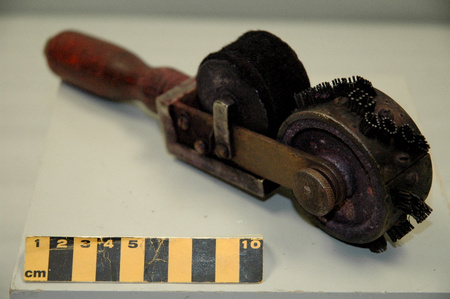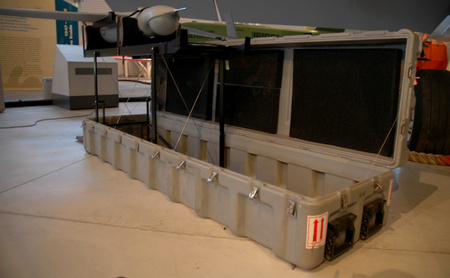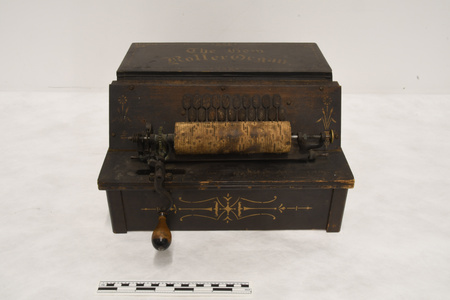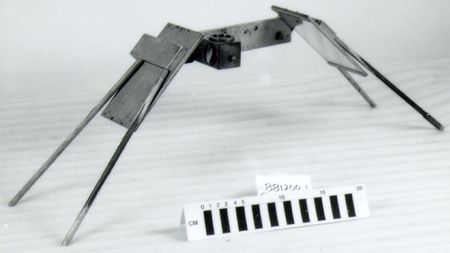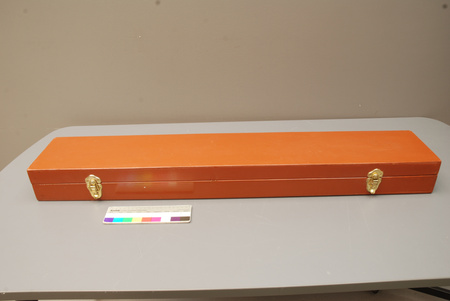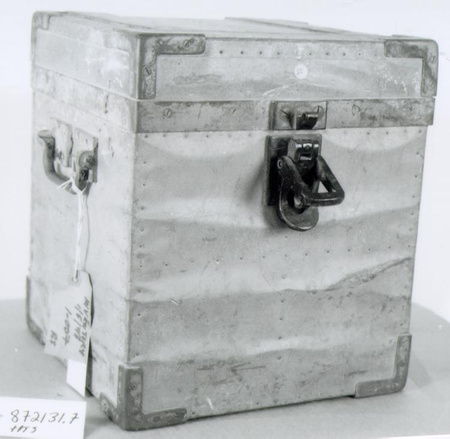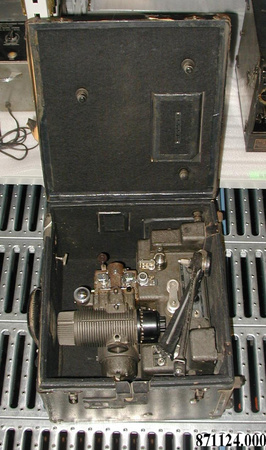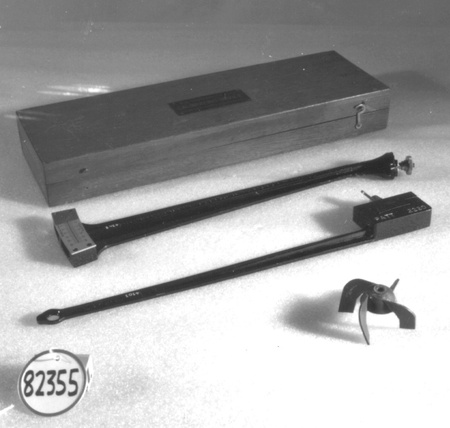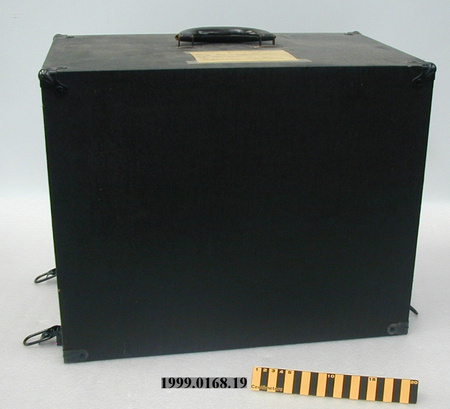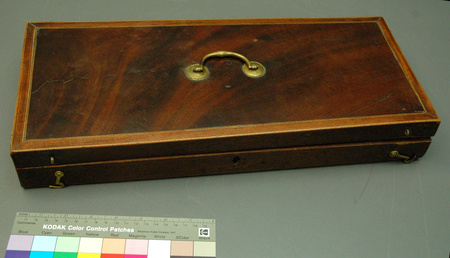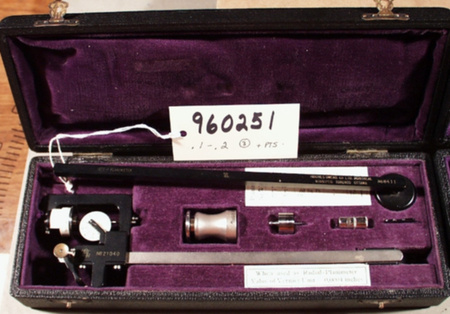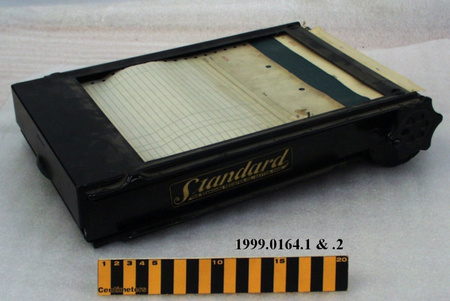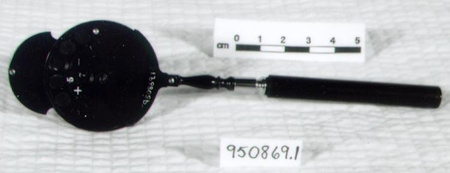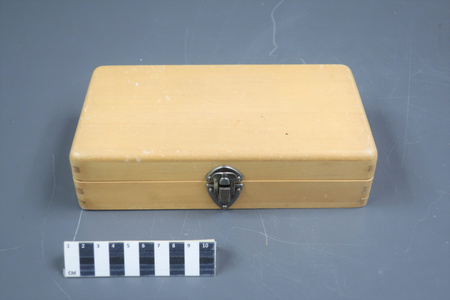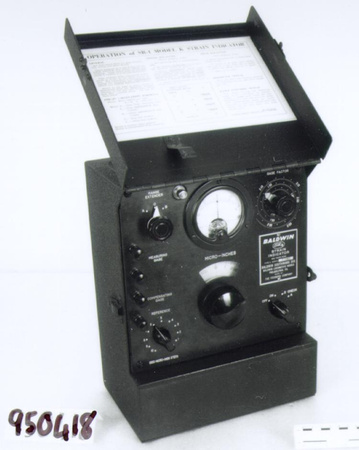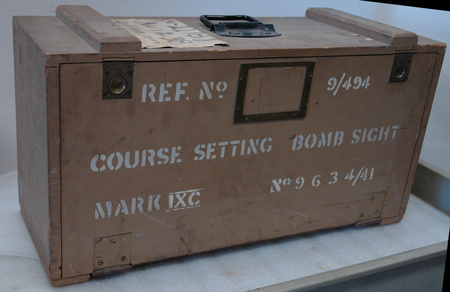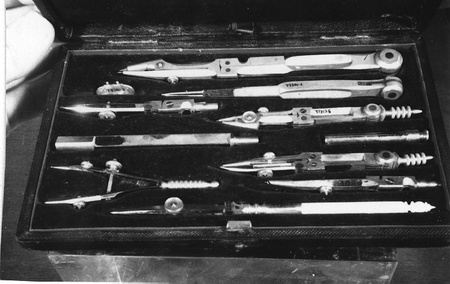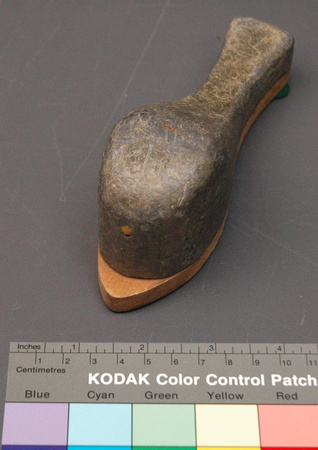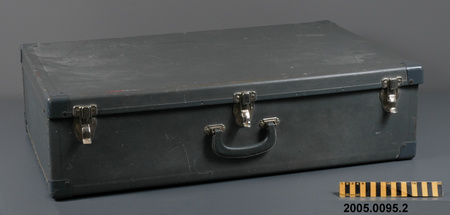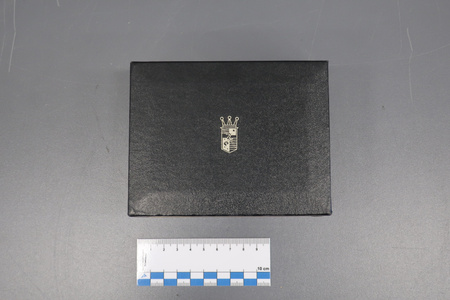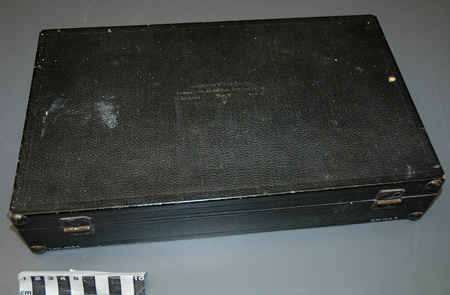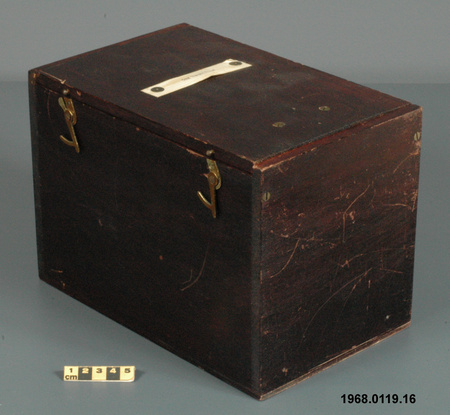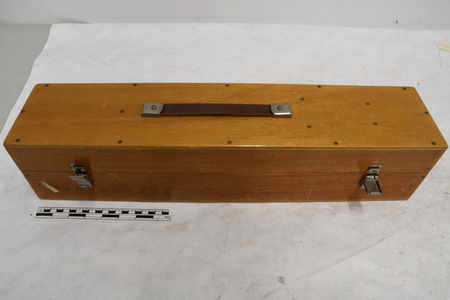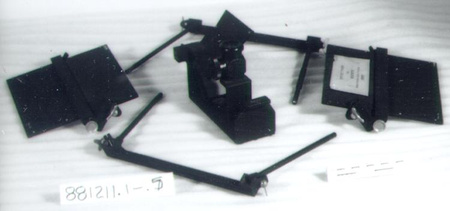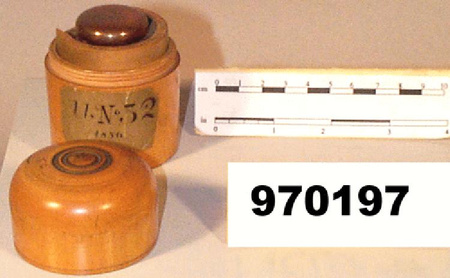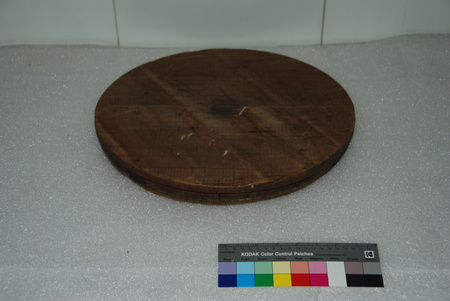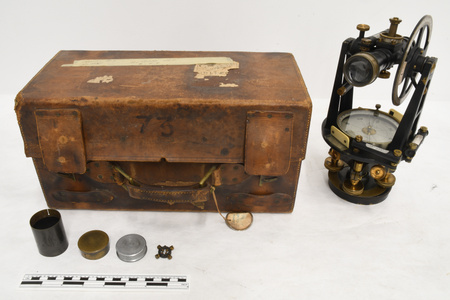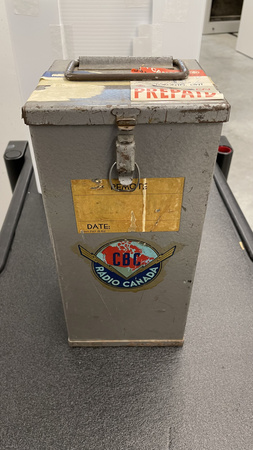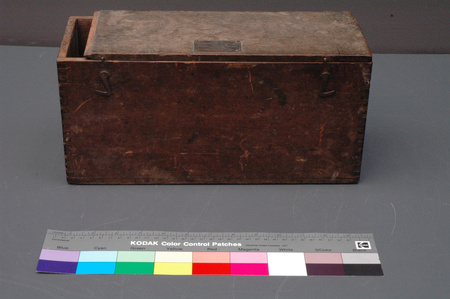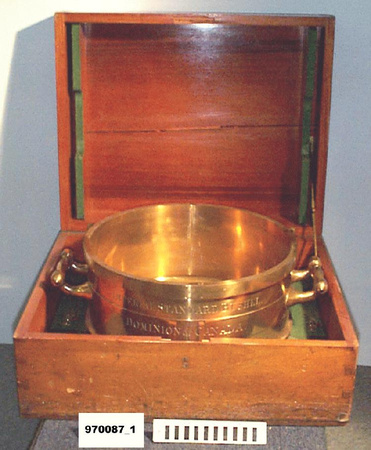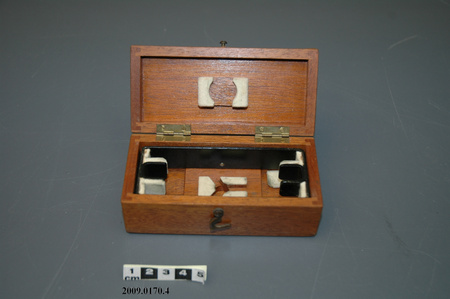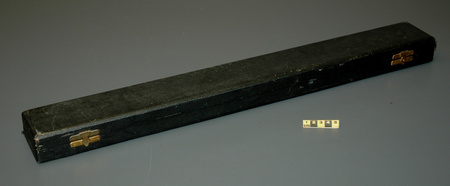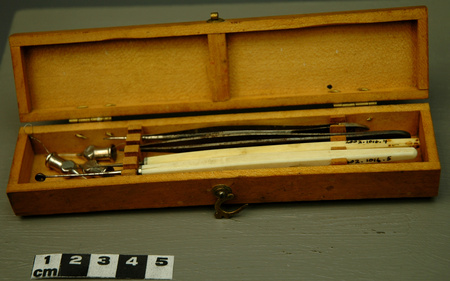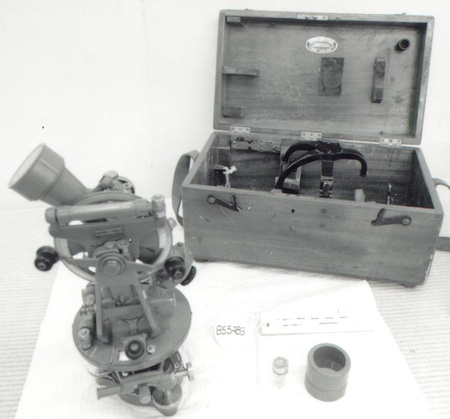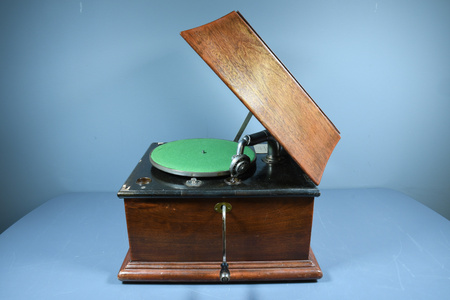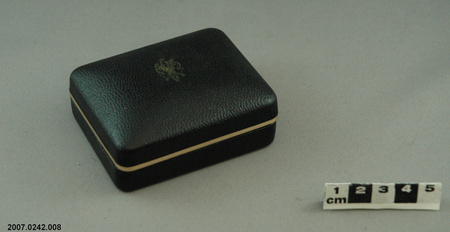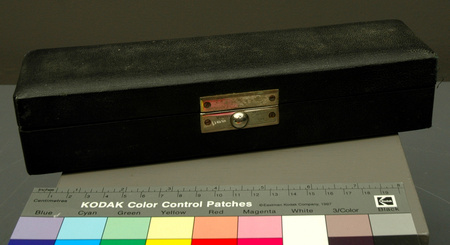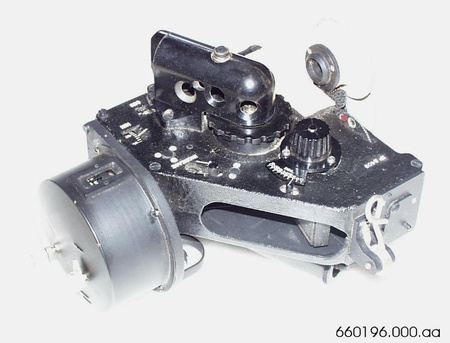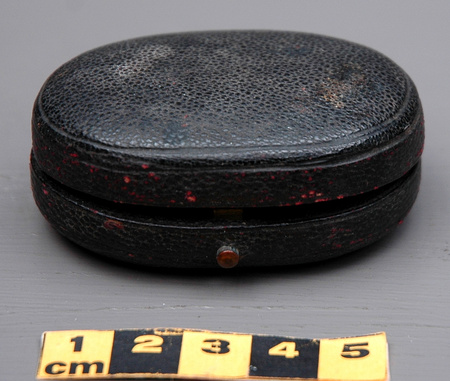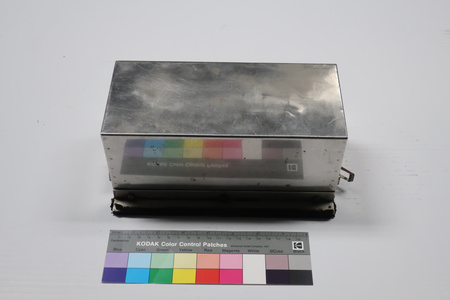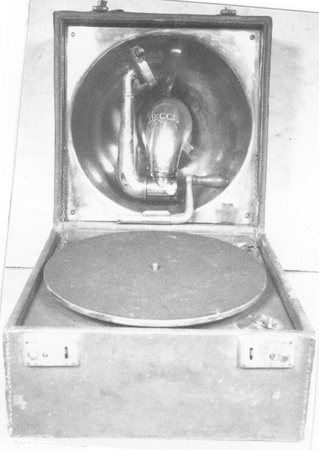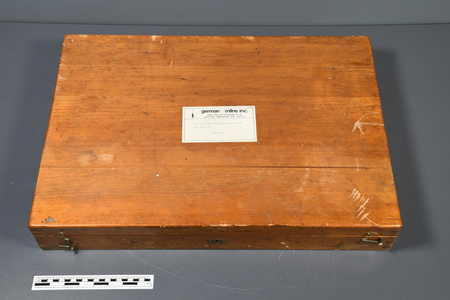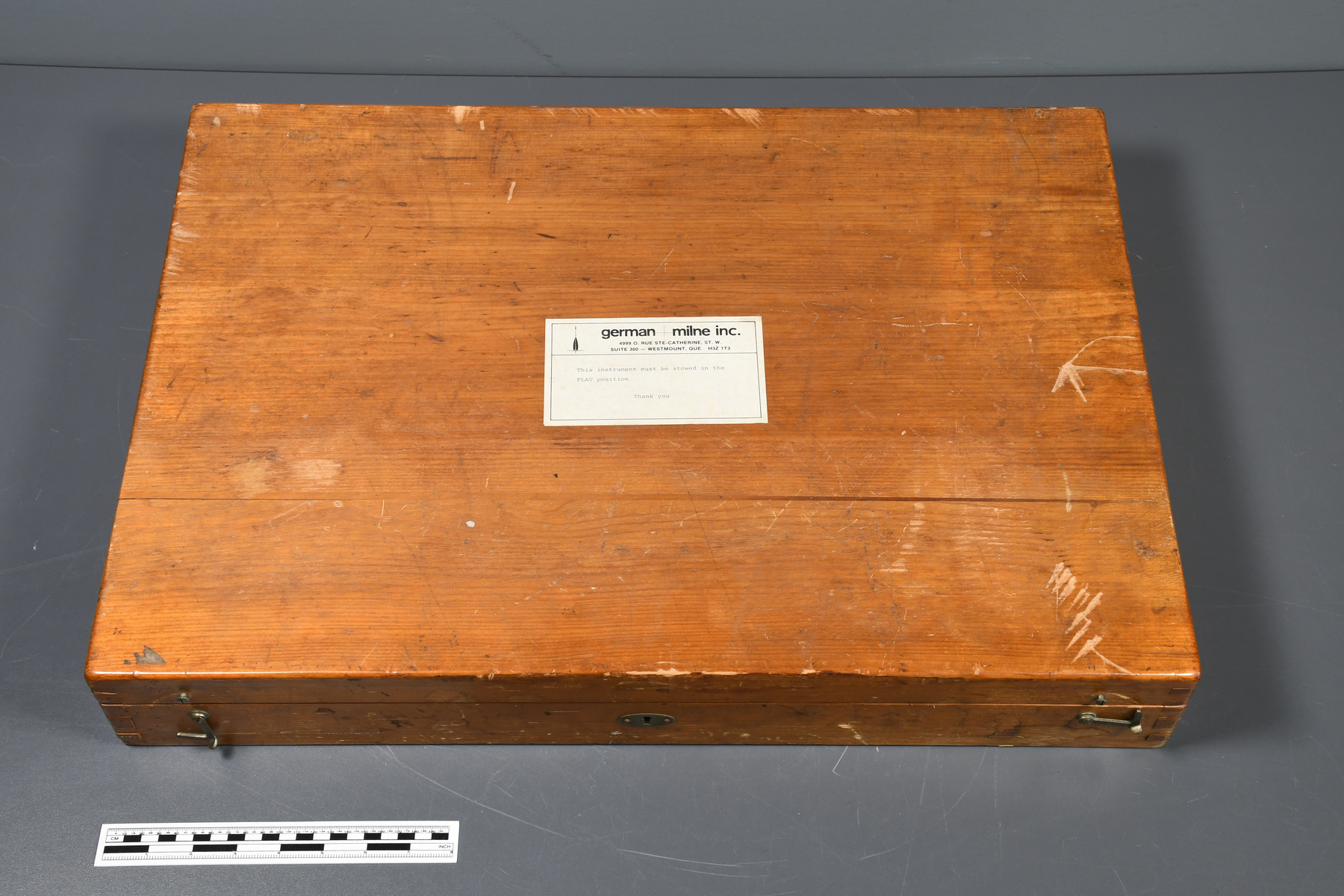Case, instrument
Use this image
Can I reuse this image without permission? Yes
Object images on the Ingenium Collection’s portal have the following Creative Commons license:
Copyright Ingenium / CC BY-NC-ND (Attribution-NonCommercial 4.0 International (CC BY-NC 4.0)
ATTRIBUTE THIS IMAGE
Ingenium,
2008.1656.005
Permalink:
Ingenium is releasing this image under the Creative Commons licensing framework, and encourages downloading and reuse for non-commercial purposes. Please acknowledge Ingenium and cite the artifact number.
DOWNLOAD IMAGEPURCHASE THIS IMAGE
This image is free for non-commercial use.
For commercial use, please consult our Reproduction Fees and contact us to purchase the image.
- OBJECT TYPE
- hard bodied/hinged lid
- DATE
- 1930
- ARTIFACT NUMBER
- 2008.1656.005
- MANUFACTURER
- Unknown
- MODEL
- Unknown
- LOCATION
- Unknown
More Information
General Information
- Serial #
- N/A
- Part Number
- 5
- Total Parts
- 5
- AKA
- N/A
- Patents
- N/A
- General Description
- Wooden case with brass hardware and felt padding.
Dimensions
Note: These reflect the general size for storage and are not necessarily representative of the object's true dimensions.
- Length
- 63.6 cm
- Width
- 45.0 cm
- Height
- 10.0 cm
- Thickness
- N/A
- Weight
- N/A
- Diameter
- N/A
- Volume
- N/A
Lexicon
- Group
- Marine Transportation
- Category
- Naval architecture
- Sub-Category
- N/A
Manufacturer
- AKA
- Unknown
- Country
- Unknown
- State/Province
- Unknown
- City
- Unknown
Context
- Country
- Canada
- State/Province
- Quebec
- Period
- Unknown
- Canada
-
Modern industrial ship design and construction arose in Canada largely as a result of the extraordinary demands for tonnage during the 20th century's two World Wars. In the post-war period, maintaining and developing a capacity to build ships in Canada became a matter of national policy, supported by a series of government subsidies, initiatives and contracts, all offered in the face of increasing overseas competition. This capacity was persistently presented and understood as an important component of national sovereignty, both in terms of defense and in terms of access to and control over the nation's northern seaways - a matter that remains topical today. German and Milne's history, development, success and ultimately its end, mirrors this larger trend. As such, artifacts closely related to the company's operations and output are essential to preserving the story of industrial shipbuilding in Canada. - Function
-
Used to safely support and store an integrator and its associated parts when not in use. - Technical
-
The technical significance of the Amsler Integrator in the practice of naval architecture is well-described in the article "The Amsler Integrator and the Burden of Calculation". While there are other integrators in the CSTM collection, one of which is an Amsler (1999.0128), none bear a direct association with German and Milne or any Canadian firm of naval architects. - Area Notes
-
Unknown
Details
- Markings
- On the label on the proper top of the lid: "[logo] german + milne inc./ 4999 O. RUE STE-CATHERINE, ST. W./ SUITE 300 - WESTMOUNT, QUÉ. H3Z 1T3/ This instrument must be stowed in the/ FLAT position/ Thank you"/ On the card affixed inside: "Important!/ The integrating rollers must be prevented from rusting. Do/ not touch them with moist fingers!/ The instrument is to be handled carefully!/ When removing the instrument from the case, and placing/ it on the paper, hold it with the left hand at the frame between/ the guiding wheels, and with the right hand at the tracing arm./ First place the guiding wheels into the groove of the steel rail/ and then lower the front part of the instrument carefully on to/ the paper, the left hand which is now free, thereby assisting./ The guiding wheels should not be shifted in axial direction; similarly the tracing points ought not to be displaced from their/ original position. Do not screw to and fro the small frame bea-/ ring the Integrating disc "A" and do not displace sideways the/ vertical axles of the toothed discs bearing the integrating rollers/ "M", "J" and "P", else the Integrator will no longer give accurate results./ Avoid bending the distance gauges."
- Missing
- Appears complete.
- Finish
- The case has a medium-brown finished wood exterior bearing a white label with black text on the lid and brass-coloured hinges and clasps. The interior is lighter brown unfinished wood with black felt padding and a white card with black text affixed to the inside of the lid.
- Decoration
- N/A
CITE THIS OBJECT
If you choose to share our information about this collection object, please cite:
Unknown Manufacturer, Case, instrument, circa 1930, Artifact no. 2008.1656, Ingenium – Canada’s Museums of Science and Innovation, http://collection.ingenium.ca/en/item/2008.1656.005/
FEEDBACK
Submit a question or comment about this artifact.
More Like This
